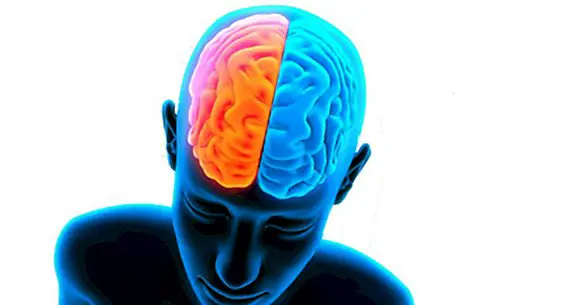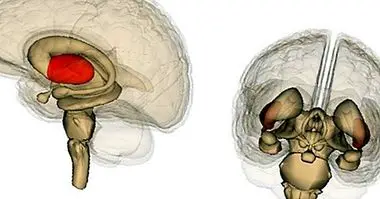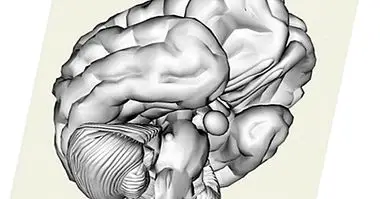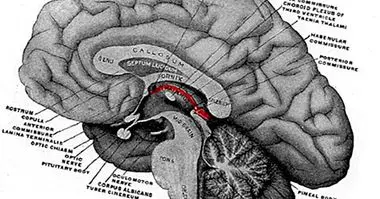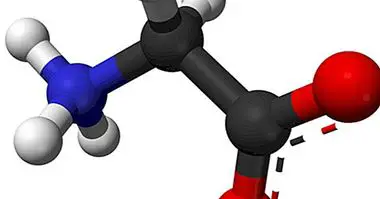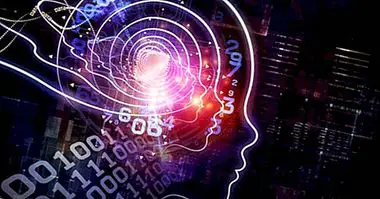GABA (neurotransmitter): what it is and what role it plays in the brain
The GABA (gamma-aminobutyric acid) is a neurotransmitter widely distributed in the neurons of the cerebral cortex. What does this mean? Well, GABA is a type of substance that is used by neurons of the nervous system when communicating with each other through spaces (called synaptic spaces) by which they connect between them.
Now, GABA is just one of many types of neurotransmitters of the many that act in the brain. That is why it performs some functions that other neurotransmitters do not do. Its function is to be a inhibitory neurotransmitter .
GABA, the inhibitory neurotransmitter
GABA is a neurotransmitter (such as serotonin or dopamine) and, therefore, sends chemical messages through the brain and nervous system . In other words, it participates in the communication between neurons.
The role of GABA is to inhibit or reduce neuronal activity, and it plays an important role in the behavior, cognition and response of the body to stress. Research suggests that GABA helps control fear and anxiety when neurons are overexcited.
On the other hand, low levels of this neurotransmitter are associated with anxiety disorders, sleep problems, depression and schizophrenia. It has also been found that young neurons are more excitable than the old ones, and this is due to the role that GABA exerts over the former.
GABA Contributes to motor control, vision or regulates anxiety, among other cortical functions. There are different drugs that increase the levels of GABA in the brain and are used to treat epilepsy, Huntington's disease or to calm anxiety (for example, benzodiazepines).

It must be taken into account, however, that it still knows little What are the functions and processes in which GABA intervenes, and therefore it is a haste to assume that its usefulness is simply what I have described. In addition, this neurotransmitter intervenes to a greater or lesser extent in other communication dynamics between neurons in which other neurotransmitters have a more relevant role.
The relation of GABA to fear and anxiety
GABA was discovered in 1950 by Eugene Roberts and J. Awapara, and since then several studies have been carried out to better understand its relationship with anxiety disorders.
In the last decades, research on GABA and benzodiazepines have been numerous , basically to look for treatments against the pathological alterations of fear and anxiety. These studies have concluded that GABA is involved in these emotions, but it does not seem that its role is other than that of inhibitory modulator of the other neurotransmission systems such as noradrenaline.
In addition, other studies have also provided interesting conclusions about how the effect of this neurotransmitter is able to reduce the effects of stress in individuals. In an experiment published on Journal of Neuroscience It was shown that when individuals perform physical exercise on a regular basis, the level of GABA neurons increases in the brain, which affects the ventral hippocampus, a region of the brain linked to the regulation of stress and anxiety. Another study, this time carried out jointly by the University of Boston and the University of Utah, found that there is also an increase in this neurotransmitter in yoga practitioners.
To learn more about the psychological benefits of physical exercise and yoga you can read our articles:
- The 10 psychological benefits of practicing physical exercise
- The 6 psychological benefits of yoga
- 10 benefits of yoga for athletes (according to science)
How is GABA synthesized?
GABA is synthesized from the decarboxylation of glutamate thanks to the action of the enzyme glutamate decarboxylase (GAD), a process that occurs in the GABAergic neurons in the cerebellum, the basal ganglia and many areas of the cerebral cortex, also in the spinal cord. . If the synthesis of this neurotransmitter is inhibited, convulsive attacks occur.
The GABA receptors
GABA receptors are probably the most numerous in the nervous system of mammals. It is estimated that are present in at least 30-40% of the nerve cells in the human brain .
There are three types of receptors for GABA: GABA-A, GABA-B and GABA-C. The latter is considered a subtype of the GABA-A receptor, and is also called GABA-A rho.
The GABA-A receptor, the best known
The ionotropic GABA-A receptor, which is located in the plasma membrane of the post synaptic terminal, is the one that is related to benzodiazepines such as Diazepam (better known as Valium), barbiturates or alcohol. It is the most well-known receptor and is composed of five polypeptide subunits : α, β, γ, δ, ε, each with different functions.
If you want to know more about this receiver, the following video explains the structure and operation of the GABA-A receiver:
The GABA-B receptor is metabotropic, and is found in the plasma membrane of the pre- and post-synaptic terminals. The GABA C receptor, like GABA-A, is ionotropic.
Ionotropic and metabotropic receptors
The ionotropic receptors receive this name because they are coupled to an ion channel, that when the ligand is joined to them the channel opens and an ion enters or leaves the channel. In the case of the GABA-A receptor, chlorine (Cl-) enters, which produces the inhibitory response. Its effect is fast because you just have to open the channel to produce the action.
In contrast, metabotropic receptors, such as GABA-B, are slower receptors and are coupled to G proteins, which, specifically in the case of this receptor, lead to the activation of potassium channels (K +) for the depolarization of the cell .
Other neurotransmitters and their functions
In addition to GABA, in Psychology and Mind We have already talked about other neurotransmitters and their functioning inside the brain. Among them serotonin, also known as the hormone of happiness, and dopamine, a chemical related to pleasurable behavior and reinforcement. So do not miss the following articles:
- Serotonin: discover the effects of this hormone on your body and mind
- Dopamine: 7 essential functions of this neurotransmitter
Bibliographic references:
- Bloom, F. 1994. Psychopharmacology. The fourth generation of progress. Raven Press.

